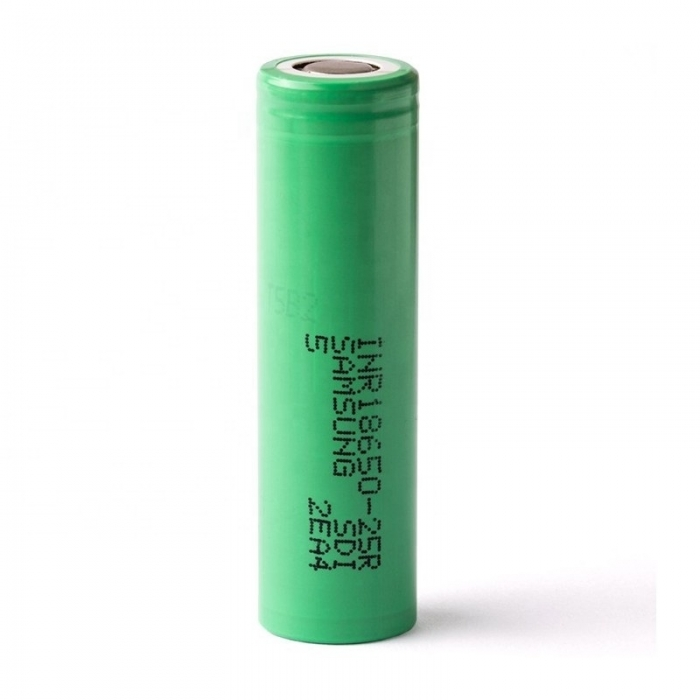
The Rise of Portable Power: Exploring Vape Battery Technology
Battery technology – it’s not usually the first thing that comes to mind when you think of vaping. However, as any seasoned vaper knows, it is the heartbeat of any vaping device. It's what powers the production of those flavorful clouds and the smooth, satisfying experience that vaping delivers. Today, we explore the unsung hero of vaping, the vape battery, and how it’s evolving in a rapidly changing landscape. So, buckle up, power up, and let’s dive into the electrifying world of vape batteries!
The Beginnings: A Spark of Innovation
The history of vape batteries dates back to the inception of vaping itself. The first electronic cigarette, created by Hon Lik in 2003, was powered by a lithium-ion battery. This was the first step towards the rise of portable power in vaping.
Lithium-ion batteries were, and still are, the backbone of many electronic devices. Their high energy density, long lifespan, and lightweight characteristics made them ideal for vaping devices. They could power the heating element, known as an atomizer, converting the e-liquid into a flavorful vapor – creating the experience that we’ve come to love and know as vaping.
However, as with any technology, there were limitations. Early lithium-ion vape batteries were unregulated, which could lead to problems with overheating and, in some cases, device failure. Yet, as the saying goes, “Necessity is the mother of invention”. As vaping became more popular, so did the demand for safer, more efficient, and more powerful batteries.
Charging Ahead: The Evolution of Vape Batteries
As the vaping industry developed, so did the battery technology. The main focus was on improving safety, performance, and versatility.
Regulated batteries, equipped with built-in circuitry to prevent overheating and overcharging, became the norm. Battery capacity, measured in milliampere-hours (mAh), increased, allowing for longer vaping sessions without needing a recharge. The introduction of variable voltage and variable wattage settings enabled vapers to control the power output, tailoring the vaping experience to their preference.
In parallel to these advancements, the vape batteries themselves evolved. The bulky, cylindrical 18650 batteries became a standard for many vaping devices, thanks to their balance of capacity and output. Later, other form factors such as 20700 and 21700 batteries, offering even more power and capacity, started to find their place in the vaping world.
Modifications, including sub-ohm vaping, pushed batteries to deliver high current, resulting in bigger clouds and more intense flavors. As a result, high-drain batteries, designed to provide a steady flow of power even under high demand, grew in popularity among cloud chasers and flavor enthusiasts alike.
Powering the Present: Vape Battery Technology Today
Fast forward to today, and you’ll find a vape battery market brimming with choices. From small, sleek pod systems powered by integrated batteries to powerful box mods housing replaceable 18650s or even 21700s, the options are plentiful.
Technological advancements have led to safer, more efficient, and longer-lasting vape batteries. Quick charging technology is more prevalent, with some devices capable of going from empty to full in less than an hour. Furthermore, built-in safety features such as short circuit protection, overcharge protection, and automatic cut-off are now standard across the board, making vaping a safer experience.
Moreover, the increasing integration of smart technology in vape devices is reshaping the vape battery landscape. Devices equipped with intelligent chipsets can optimize power output based on coil resistance, increasing battery efficiency and delivering a consistent vaping experience.
Forecasting the Future: What's Next for Vape Batteries?
While the current state of vape battery technology is impressive, the future promises even more exciting advancements. Researchers are already experimenting with solid-state lithium batteries, promising higher energy density and enhanced safety. If successful, these could revolutionize the vaping industry, offering vapers longer-lasting, safer, and even more powerful devices.
Moreover, the rise of sustainable technology and the global shift towards green energy may lead to developments in renewable or biodegradable vape batteries. The possibility of solar-powered vape devices, while still a distant reality, paints a picture of an environmentally friendly vaping future.
The User’s Guide: Understanding Vape Battery Specifications
While the above gives an overview of the world of vape battery technology, it's equally important to understand what the numbers and terminology on your battery mean. This knowledge can help you choose the right battery for your device and ensure you're using it safely.
Battery Capacity
One of the first things you'll notice when buying a vape battery is a number followed by "mAh" – this stands for milliampere-hours, and it's a measure of the battery's capacity. The higher the mAh, the longer the battery can theoretically last between charges.
However, remember that higher-capacity batteries often come in larger sizes. If you prefer compact vape devices, you might need to compromise on battery life.
Voltage, Wattage, and Resistance
Voltage, wattage, and resistance are all critical to understanding how your battery interacts with your vaping device.
Voltage (V) refers to the potential difference provided by the battery. Most batteries operate at a standard voltage of 3.7V when fully charged, though this can decrease as the battery discharges.
Wattage (W), on the other hand, is the power output of your device. Many modern vape devices allow you to adjust the wattage to customize your vaping experience.
Lastly, resistance (measured in ohms, Ω) is related to the vape coil in your device. Lower resistance allows for a higher current and more power, often leading to increased vapor production.
Knowing these values and understanding how they interrelate is key to selecting a battery that can safely and effectively power your vape device.
Continuous Discharge Rating (CDR)
The Continuous Discharge Rating (CDR), often measured in amperes (A), tells you how much current a battery can safely discharge continuously. This number is particularly important for sub-ohm vapers or those who use devices that require high power output.
Always ensure that your battery’s CDR meets or exceeds the amperage required by your device. Using a battery with a lower CDR than needed can lead to overheating and potential battery failure.
The Dos and Don’ts: Vape Battery Safety
Vape battery safety is a topic that deserves its own spotlight. While modern batteries and devices come equipped with numerous safety features, following these additional tips can help ensure a safe and enjoyable vaping experience.
Do:
-
Use a battery suitable for your device: Make sure your battery has the right specifications – voltage, wattage, capacity, and CDR – to power your device effectively and safely.
-
Charge safely: Use a dedicated battery charger from a reputable manufacturer. Avoid leaving your batteries to charge overnight or unattended.
-
Store your batteries correctly: Keep your batteries in a non-conductive (preferably plastic) case when not in use to prevent accidental short-circuiting.
Don't:
-
Ignore signs of wear and tear: If your battery wrap is damaged, replace it or have it rewrapped by a professional. A damaged wrap can lead to a dangerous short circuit.
-
Use a wet or leaking battery: If your battery has come into contact with liquid or is leaking, do not use it. Dispose of it safely and replace it with a new one.
-
Expose batteries to extreme temperatures: High heat can cause a battery to vent or even explode, while extreme cold can diminish its performance.
By being aware of the characteristics of your vape battery and following safety guidelines, you can ensure your vaping experience remains not just pleasurable, but safe as well.
The Final Puff: A Look to the Future
The vape battery technology of today is truly a marvel. But with the pace of advancement, we are just scratching the surface. As we look towards the future, we can expect new innovations and developments that will continue to enhance the vaping experience.
As a vaper, it’s essential to stay informed and understand the technology you’re using. Remember, your vape device is only as good as its power source. So here's to the batteries - the heart of our vaping devices. Here's to the unsung heroes that continue to power our puffs. Here’s to the portable power, powering every puff, one vape at a time.



